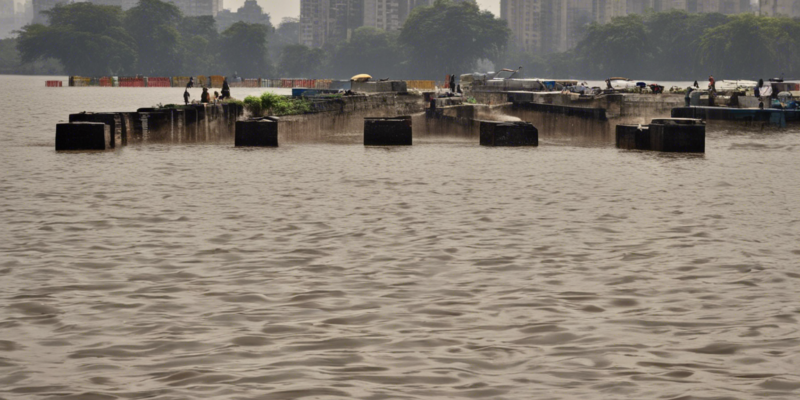In Mumbai, the city of dreams and the financial capital of India, lake levels play a crucial role in the overall well-being of the city. With the onset of the monsoon season, the lakes in and around Mumbai receive a significant amount of rainfall, which in turn affects the water levels in these lakes. The fluctuation in lake levels is closely monitored by authorities and residents alike, as it can have implications on various aspects of life in the city, such as water supply, agriculture, and the environment.
Understanding the Importance of Lake Levels in Mumbai
Mumbai is home to several lakes, including Powai Lake, Vihar Lake, Tulsi Lake, and Modak Sagar Lake, among others. These lakes serve as important sources of water for the city, helping to meet the ever-increasing demand for water in this densely populated metropolis. The level of water in these lakes is crucial for maintaining a steady water supply for domestic, industrial, and agricultural use.
Factors Affecting Mumbai Lake Levels
The lake levels in Mumbai are primarily influenced by the amount of rainfall received during the monsoon season. If the city receives abundant rainfall, the lake levels tend to rise, which is beneficial for water storage and supply. However, inadequate rainfall can lead to a decrease in lake levels, potentially causing water scarcity issues in the city.
Monitoring Mumbai Lake Levels
To keep track of the lake levels in Mumbai, various agencies and organizations, such as the Brihanmumbai Municipal Corporation (BMC) and the Maharashtra State Irrigation Department, monitor the water levels regularly. This monitoring involves measuring the water levels in different lakes, analyzing rainfall data, and predicting water availability for the upcoming months.
Impact of Mumbai Lake Levels on Water Supply
The water stored in Mumbai’s lakes plays a critical role in fulfilling the city’s water requirements. Adequate lake levels ensure a steady supply of water for domestic, industrial, and agricultural purposes. On the other hand, low lake levels can lead to water shortages, prompting authorities to implement water conservation measures and rationing.
Challenges Faced in Maintaining Mumbai Lake Levels
Despite efforts to manage and maintain optimal lake levels, Mumbai faces several challenges that can impact the water supply in the city. Rapid urbanization, encroachment on lake catchment areas, pollution, and climate change are some of the factors that pose challenges to preserving the water bodies in Mumbai.
Strategies for Sustainable Water Management in Mumbai
To address the challenges related to lake levels and water supply, sustainable water management practices need to be implemented in Mumbai. This can include rainwater harvesting, watershed management, desilting of lakes, afforestation in catchment areas, and promoting water conservation practices among residents.
Future Outlook for Mumbai Lake Levels
As the effects of climate change become more pronounced, it is essential for Mumbai to adopt proactive measures to sustainably manage its water resources. Enhancing monitoring systems, investing in infrastructure for water storage and distribution, and promoting community involvement in water conservation are key aspects that can help maintain optimal lake levels in the city.
Conclusion
In conclusion, Mumbai lake levels are a critical aspect of water management in the city. By understanding the factors influencing lake levels, monitoring them effectively, addressing challenges, and implementing sustainable practices, Mumbai can ensure a reliable water supply for its growing population. It is imperative for authorities, residents, and other stakeholders to work together towards preserving and enhancing the city’s water resources for future generations.
FAQs (Frequently Asked Questions)
1. Why are Mumbai lake levels important?
Mumbai lake levels are crucial as they impact the city’s water supply for domestic, industrial, and agricultural use.
2. How are Mumbai lake levels monitored?
Mumbai lake levels are monitored by agencies like the BMC and the Maharashtra State Irrigation Department through regular measurements and analysis of rainfall data.
3. What challenges does Mumbai face in maintaining optimal lake levels?
Challenges include rapid urbanization, encroachment on lake catchment areas, pollution, and the impact of climate change.
4. What can be done to address water scarcity issues in Mumbai?
Implementing sustainable water management practices like rainwater harvesting, watershed management, and water conservation can help address water scarcity in the city.
5. How can residents contribute to maintaining optimal lake levels in Mumbai?
Residents can contribute by practicing water conservation, avoiding pollution of water bodies, and supporting initiatives for sustainable water management in the city.


